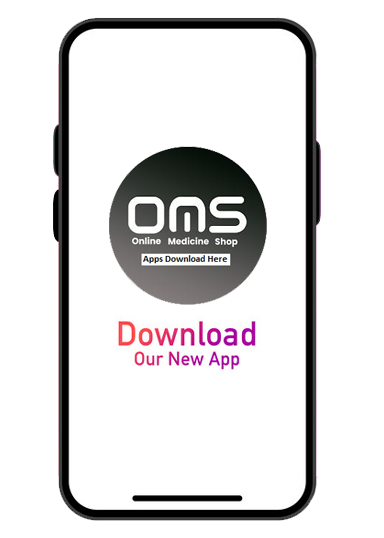
Geficent 250 mg Tablet - 10's pack
৳ 120
Quantity:
1
SKU: T2M0213
Order By Call:
+88 01540 384 786 (Mobile)
+88 01819 479 004 (WhatsApp)
About the Product
Full Description
Presentation
\nGeficent 250: Each tablet contains Gefitinib INN 250 mg.
\n \nDescription
\nGefitinib is a kinase inhibitor. The epidermal growth factor receptor (EGFR) is expressed on the cell surface of both normal and cancer cells and plays a role in the processes of cell growth and proliferation. Some EGFR activating mutations (exon 19 deletions or exon 21 point mutation L858R) within non-small cell lung cancer (NSCLC) cells have been identified as contributing to the promotion of tumor cell growth, blocking of apoptosis, increasing the production of angiogenic factors and facilitating the processes of metastasis.
\n \nGefitinib reversibly inhibits the kinase activity of wild-type and certain activating mutations of EGFR, preventing autophosphorylation of tyrosine residues associated with the receptor, thereby inhibiting further downstream signalling and blocking EGFR-dependent proliferation.
\n \nGefitinib binding affinity for EGFR exon 19 deletion or exon 21 point mutation L858R mutations is higher than its affinity for the wild-type EGFR. Gefitinib also inhibits IGF and PDGF-mediated signalling at clinically relevant concentrations; inhibition of other tyrosine kinase receptors has not been fully characterized.
\n \nIndications
\nGefitinib is a tyrosine kinase inhibitor indicated for the first-line treatment of patients with metastatic non-small cell lung cancer (NSCLC) whose tumors have epidermal growth factor receptor (EGFR) exon 19 deletions or exon 21 (L858R) substitution mutations as detected by an FDA-approved test.
\n \nLimitation of Use: Safety and efficacy of Gefitinib have not been established in patients whose tumors have EGFR mutations other than exon 19 deletions or exon 21 (L858R) substitution mutations.
\n \nDosage & Administration
\nRecommended dose is 250 mg orally, once daily with or without food.
\n \nSide Effects
\nThe following adverse reactions have been reported with Gefitinib across NSCLC trials: nausea (18%), asthenia (17%), pyrexia (9%), alopecia (4.7%), hemorrhage (including epistaxis and hematuria) (4.3%), dry mouth (2%), dehydration (1.8%), allergic reactions including angioedema and urticaria (1.1%), elevations in blood creatinine (1.5%), and pancreatitis (0.1%).
\n \nPrecautions
\nInterstitial lung disease (ILD): ILD occurred in patients taking Gefitinib. Gefitinib should be withheld for worsening of respiratory symptoms. It should be discontinued if ILD is confirmed.
\nHepatotoxicity: Periodic liver function testing should be performed. Gefitinib should be withheld for Grade 2 or higher for ALT and/or AST elevations. It should be discontinued for severe hepatic impairment.
\nGastrointestinal perforation: Gefitinib should be discontinued for gastrointestinal perforation.
\nDiarrhea: Gefitinib should be withheld for Grade 3 or higher diarrhea.
\nOcular Disorders including Keratitis: Gefitinib should be withheld for signs and symptoms of severe or worsening ocular disorders including keratitis. It should be discontinued for persistent ulcerative keratitis.
\nBullous and Exfoliative Skin Disorders: Gefitinib should be withheld for Grade 3 or higher skin reactions or exfoliative conditions.
\nEmbryo-fetal Toxicity: Gefitinib can cause fetal harm. Potential risk of Gefitinib to a fetus should be advised and effective contraception should be used.
\n \nUse in Pregnancy & Lactation
\nBased on its mechanism of action and animal data, Gefitinib can cause fetal harm when administered to a pregnant woman. Pregnant women should be advised of the potential hazard to a fetus or potential risk for loss of the pregnancy.
\nIt is not known whether Gefitinib is excreted in human milk. Breast-feeding should be discontinued during treatment with Gefitinib.
\n \nPediatric Use
\nThe safety and effectiveness of Gefitinib in pediatric patients have not been established.
\n \nGeriatric Use
\nNo overall differences in safety were observed between patients 65 years and older and those younger than 65 years. There is insufficient information to assess for differences in efficacy between older and younger patients.
\n \nDrug Interaction
\nDrugs Affecting Gefitinib Exposure
\nCYP3A4 Inducer
\nDrugs that are strong inducers of CYP3A4 increase the metabolism of gefitinib and decrease gefitinib plasma concentrations. Increase Gefitinib to 500 mg daily in patients receiving a strong CYP3A4 inducer (e.g., rifampicin, phenytoin, or tricyclic antidepressant) and resume Gefitinib at 250 mg 7 days after discontinuation of the strong inducer.
\nCYP3A4 Inhibitor
\nDrugs that are strong inhibitors of CYP3A4 (e.g. Ketoconazole and Itraconazole) decrease Gefitinib metabolism and increase Gefitinib plasma concentrations. Adverse reactions should be monitored when administering strong CYP3A4 inhibitors with Gefitinib.
\nDrugs Affecting Gastric pH
\nDrugs that elevate gastric pH (e.g., proton pump inhibitors, histamine H2-receptor antagonists, and antacids) may reduce plasma concentrations of Gefitinib. Concomitant use of Gefitinib with proton pump inhibitors should be avoided, if possible. If treatment with a proton-pump inhibitor is required, Gefitinib should be taken 12 hours after the last dose or 12 hours before the next dose of the proton-pump inhibitor. Gefitinib should be taken 6 hours after or 6 hours before an H2-receptor antagonist or an antacid.
\nHemorrhage in Patients taking Warfarin
\nInternational Normalized Ratio (INR) elevations and/or hemorrhage have been reported in some patients taking warfarin while on Gefitinib therapy. Patients taking warfarin should be monitored regularly for changes in prothrombin time or INR.
\n \nCommercial Pack
\nGeficent 250: Each box contains 1 blister strip of 10 tablets.
\n





